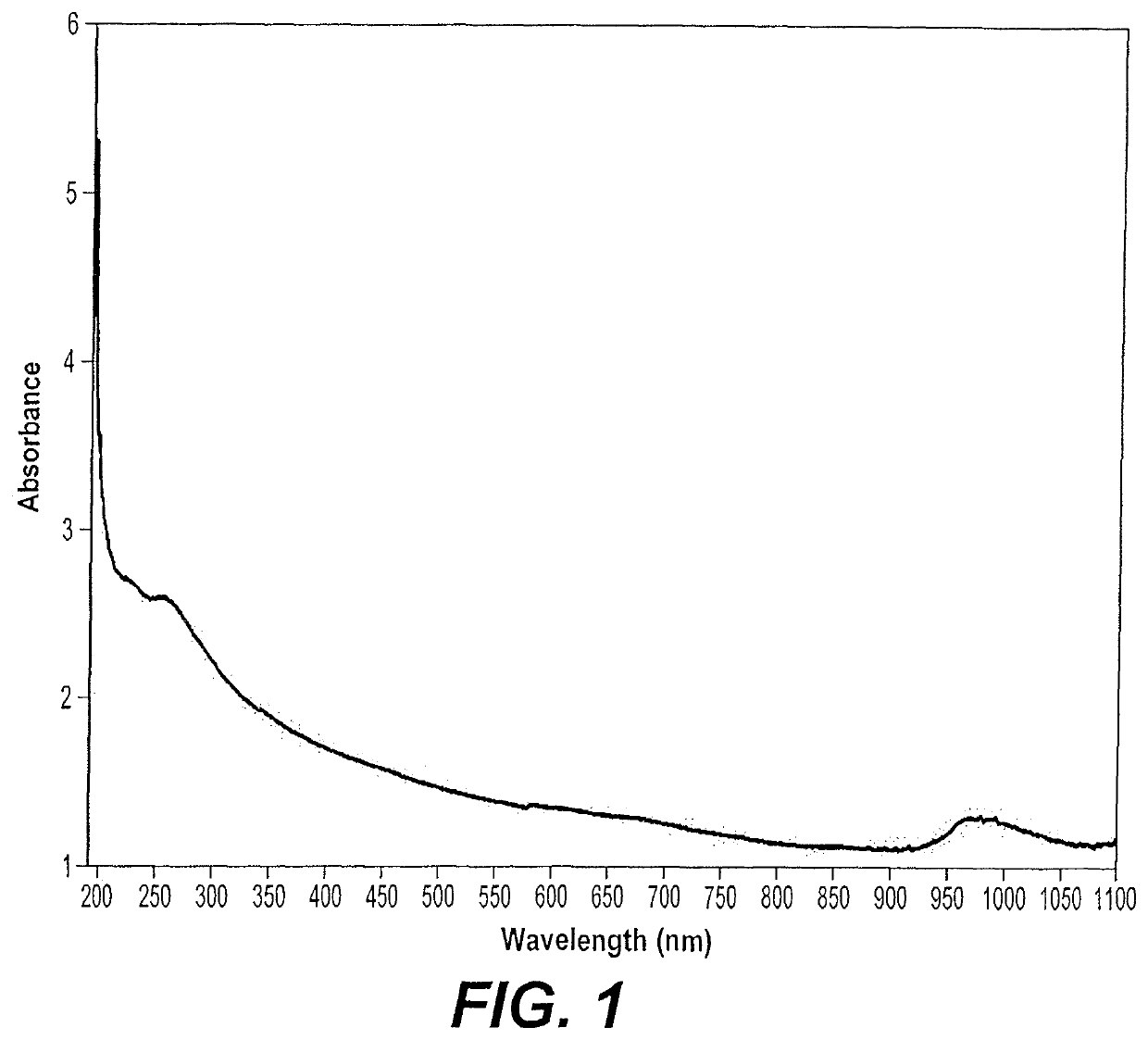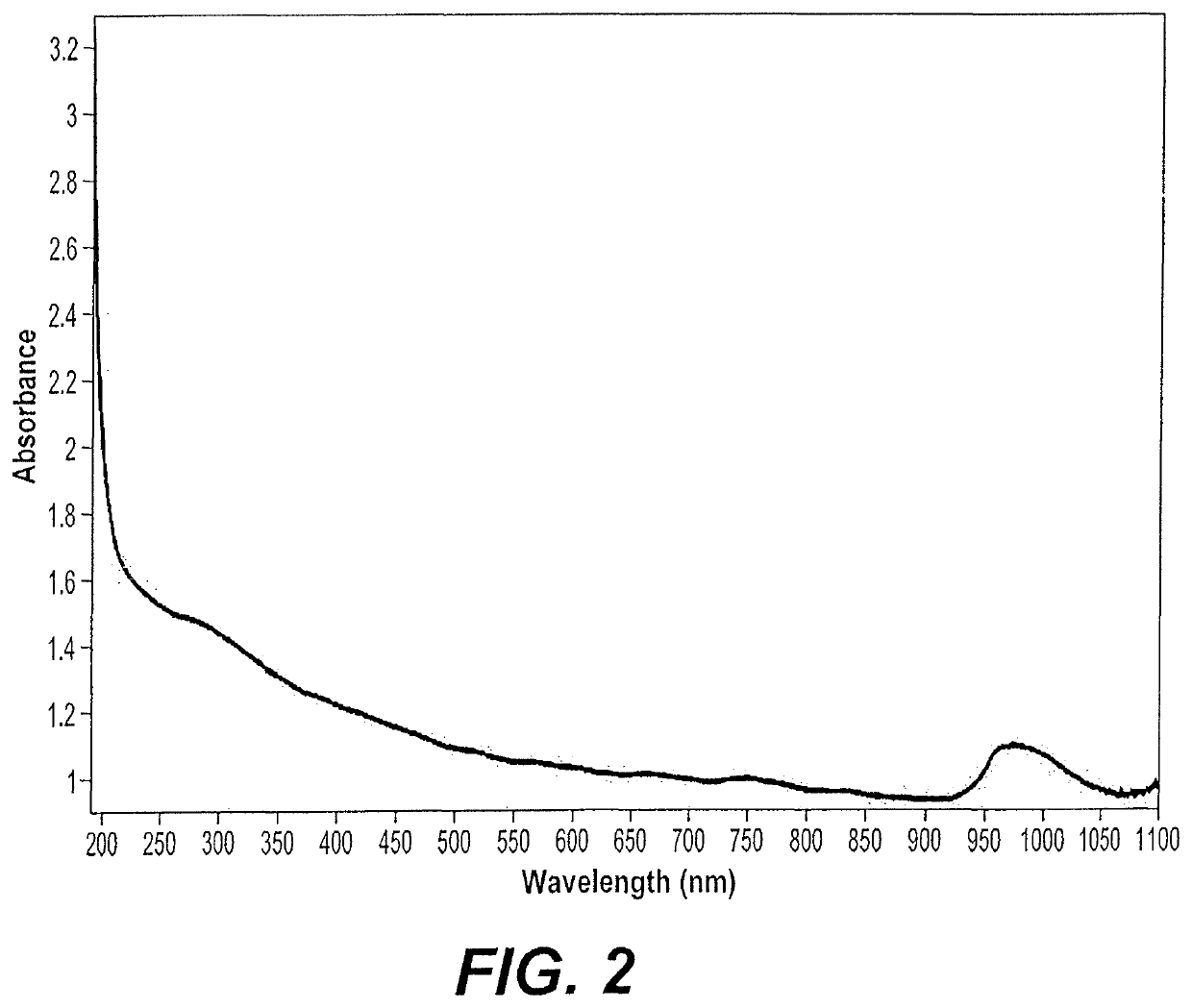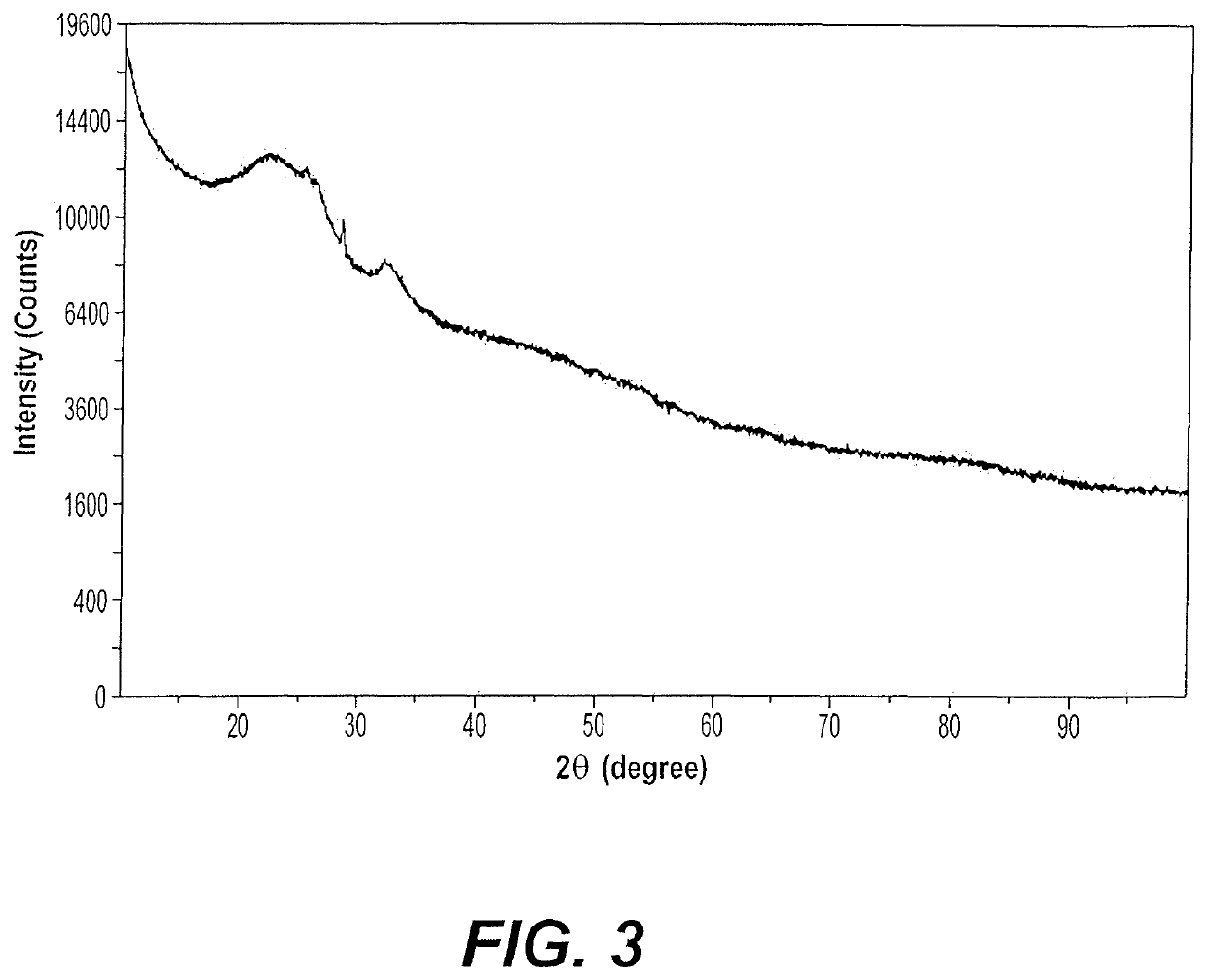Bio buckypaper synthesized with fish scales
a technology of biobuckypaper and fish scales, applied in the field of nanotechnology, can solve the problems of increasing the cost of production and difficult to achiev
- Summary
- Abstract
- Description
- Claims
- Application Information
AI Technical Summary
Benefits of technology
Problems solved by technology
Method used
Image
Examples
example 1
Preparation of Bio Buckypaper
[0035]A bio waste solution was prepared by mixing ethanol and deionized water (1:9 v / v) (15-50 ml total volume), boiling, and adding between about 30 mg and about 75 mg powdered fish scales to the mixture to produce the bio waste solution. About 120 mg τ-carrageenan (IC) was then added to about 15 ml of the bio waste solution and stirred for about 3 hours at about 70° C. to produce a biopolymer / bio waste mixture. SWCNTs (15 mg) or MWCNTs (10 mg) were then added to the biopolymer / bio waste mixture, and the resulting CNTs / carrageenan / bio waste mixtures were sonicated with a digital sonicator with a probe diameter of 10 mm, in pulse mode (0.5 s on / off), ultrasonic power of 750 W, and a frequency of 20 kHz. During sonication, the mixtures were maintained at constant temperature by placing them in 20° C. water baths. The mixtures were then used to prepare bio buckypapers by evaporative-casting in petri dishes and drying in the oven at 35° C. for about 24 hour...
example 2
Analysis of Bio Buckypapers
[0036]Bio buckypapers prepared according to the method of Example 1 with both SWCNTs and MWCNTs were analyzed. The ultraviolet-visible-absorption spectrum of bio buckypaper synthesized with MWCNTs demonstrated an absorption peak at 200-250 nm (FIG. 1), while the spectrum of bio buckypaper synthesized with SWCNTs had an absorption peak at 250-300 nm and illustrated absorbance of dispersed CNTs at 600-660 nm (the maximum absorption band arising from van Hove singularities for SWNTs).
[0037]An X-ray diffraction spectrum of bio buckypaper synthesized with MWCNTs illustrated characteristic MWNCT peaks at 2θ angle and about 26° (FIG. 3). An X-ray diffraction spectrum of bio buckypaper synthesized with SWCNTs illustrated characteristic SWNCT peaks at about 25° (FIG. 4). CNT reinforced polymer peaks are shifted to about 20° and about 30°, respectively (See FIGS. 3 and 4). The peak shift and reduced X-ray intensity further support the formation of a nanocomposite.
[0...
PUM
| Property | Measurement | Unit |
|---|---|---|
| Temperature | aaaaa | aaaaa |
| Mass | aaaaa | aaaaa |
| Mass | aaaaa | aaaaa |
Abstract
Description
Claims
Application Information
 Login to View More
Login to View More - R&D
- Intellectual Property
- Life Sciences
- Materials
- Tech Scout
- Unparalleled Data Quality
- Higher Quality Content
- 60% Fewer Hallucinations
Browse by: Latest US Patents, China's latest patents, Technical Efficacy Thesaurus, Application Domain, Technology Topic, Popular Technical Reports.
© 2025 PatSnap. All rights reserved.Legal|Privacy policy|Modern Slavery Act Transparency Statement|Sitemap|About US| Contact US: help@patsnap.com



